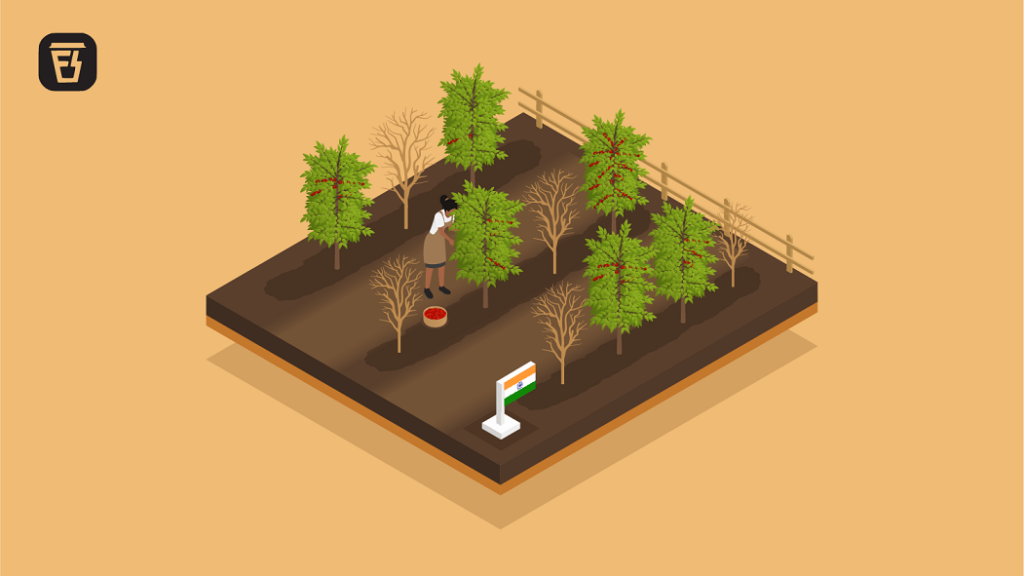
In today’s Finshots we talk about the main issues coffee farmers face in this country
The Story
Coffee!
Each day, over 1 billion people gulp down 2.5 billion cups of this steaming hot beverage. What was called the Devil’s Drink in the 1600s has now become a staple concoction across the world. And there’s one country that produces and exports most of this coffee — Brazil. In fact, it produces a staggering 40% of the world’s coffee and they are the undisputed leader.
But all’s not well with Brazil. The world’s biggest producer has been going through a bit of a rough patch. It has been hit by freakish weather — cold snaps and frost, combined with a lack of rain. Which in turn has led to a fairly lacklustre crop this year.
Now India is seeing a silver lining here. It thinks this could be an opportunity to export more of its own stuff. After all, the Coffee Board expects India to deliver a higher coffee output this year. And maybe Brazil’s loss could be India’s gain?
Well, not so fast. India really hasn’t been doing well on the export front of late. In fact, from FY12 to FY21, coffee exports have fallen by 3% annually. And that’s because Indian coffee farmers are dealing with their own problems.
For starters, there’s climate change.
You see, nearly 80% of India’s coffee production comes from the two southern states of Karnataka and Kerala. But the past few years have been a damp squib. The rains have been erratic. Some years, the monsoon came early and other times it came with vengeance. When the rains came early, the coffee fruit ripened too soon and the output was no good. When it poured heavily, flooding and landslides wiped out the crops. Farmers simply couldn’t catch a break. And with crops destroyed, yields have dropped from 500 kg to 250 kg per acre for the arabica variant of coffee bean.
Then there’s the bit about prices.
In 2019, coffee prices in real terms (i.e after adjusting for inflation) were a whopping 45% below their 2011 level. In some sense, if you were a coffee farmer, you’d have to cut costs and raise output to maintain the same standard of living. In fact, in most cases, there were no improvements. Farmers lost money hand over fist. This was further exacerbated by the excess supply of coffee beans coming in from Brazil and Vietnam. Prices took a real beating.
But the costs weren’t following the same trends. It was becoming increasingly expensive to plant and harvest coffee. For instance, according to the Karnataka Planters Association, the cost per acre of producing the arabica coffee bean variant has soared from ₹50,000 to ₹85,000 per acre. This is just in the past 3 years. Fertilizer prices have shot up. Labour costs have also ballooned. And consequently, the coffee-growing business just isn’t that financially viable anymore. Many small farmers have sold their plantations. Or even begun cultivating other crops instead.
And finally, there’s the policy-related matter.
Even though coffee is a very important crop for India, it doesn’t come under the purview of the Ministry of Agriculture. That’s right! It’s actually a part of the Ministry of Commerce. And that classification creates its own issues. For instance, coffee growers may not get the same subsidies and benefits that are extended to India’s farmers. And that’s not us saying that. Even a senior liaison officer of the Coffee Board, Yercaud and Kolli Hills, said, “Currently, we do not provide any subsidy to farmers.” And unlike many other crops, there isn’t a minimum support price (MSP) scheme pan India that can help alleviate the stress.
Now even if we were to ignore all these problems, India still wouldn’t be able to ramp up coffee production quickly. Simply because growing coffee is not an overnight affair. It takes 3–5 years for coffee trees to mature and yield bright red coffee cherries.
And what’s the government doing about all this?
Well, they are attempting to amend the decades-old Coffee Act of 1942 and replace it with the Coffee (Promotion and Development Bill) of 2022. While it’s too soon to spell out the specifics of the new Act, hopefully, it’ll have measures that’ll bring some respite to India’s struggling coffee farmers.
But wait…there still exists a long-term issue that no one’s paying attention to.
See, coffee is quite a sensitive crop. It needs the perfect temperature to bring out the best aroma and taste in the beans. Even if things get a little hotter, that can have an adverse impact on the quality of the beans. And temperatures in the coffee-growing regions of southern India are expected to rise by around 2 degrees Celsius by the mid-2030s. How are we going to combat this? No one knows yet.
So yeah, it doesn’t seem like India’s coffee farmers are going to be able to sit back on their porch with a cup of joe and relish the tough times in Brazil.
Pretty sad that.
Until next time…
source: http://www.finshots.in / Finshots.in / Home> Economy / August 22nd, 2022

